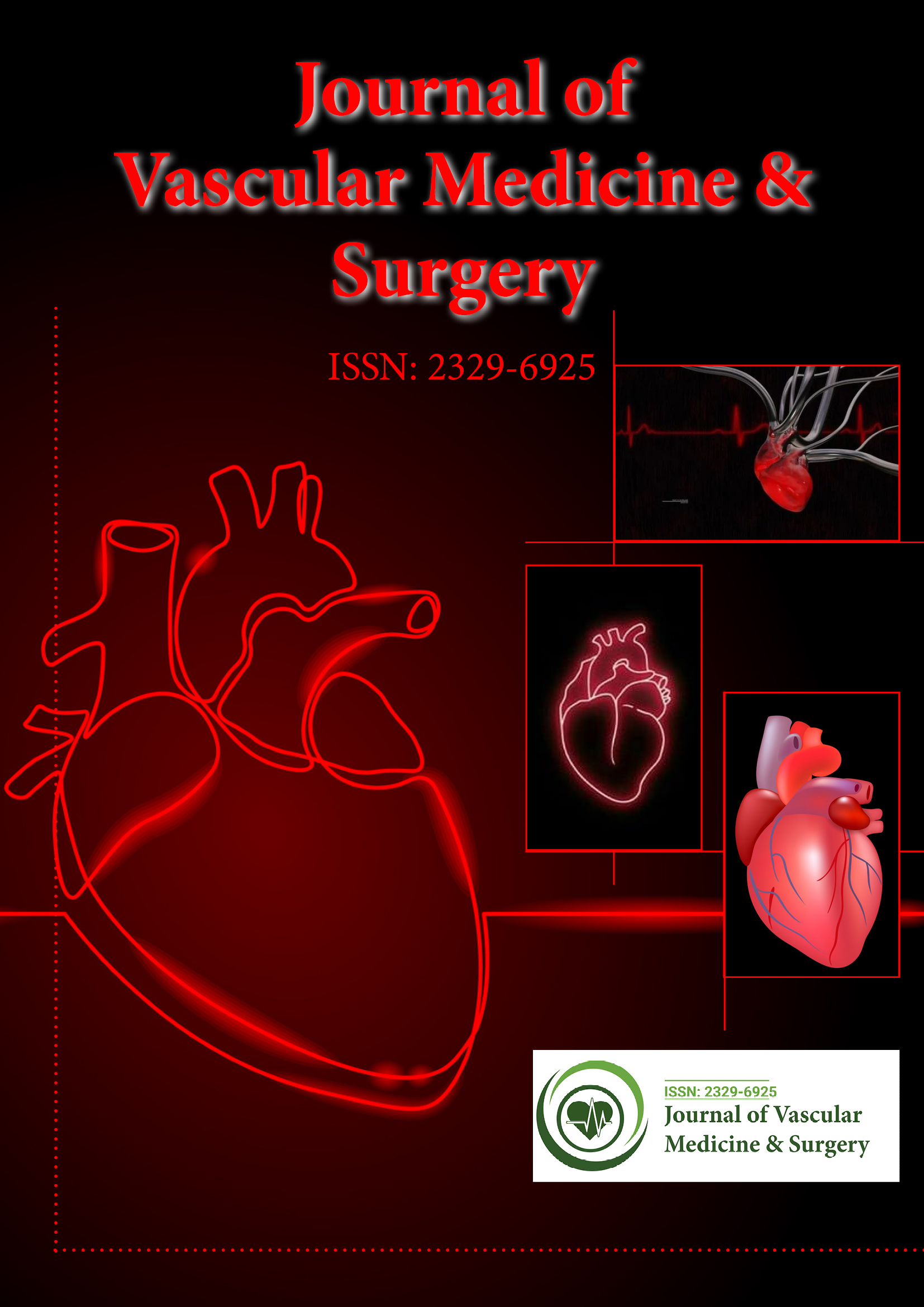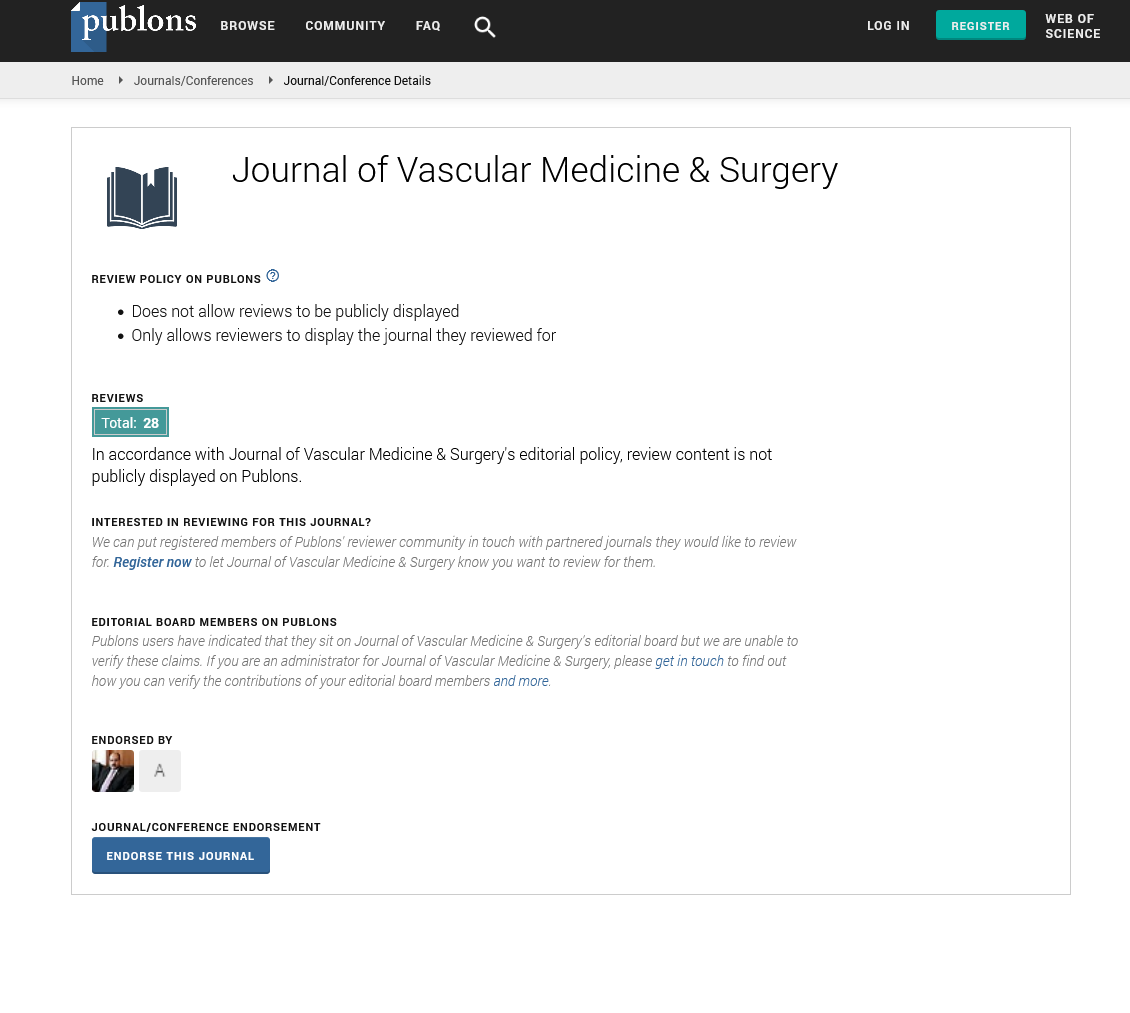Indexed In
- Open J Gate
- Academic Keys
- RefSeek
- Hamdard University
- EBSCO A-Z
- OCLC- WorldCat
- Publons
- Euro Pub
- Google Scholar
- SHERPA ROMEO
Useful Links
Share This Page
Journal Flyer

Open Access Journals
- Agri and Aquaculture
- Biochemistry
- Bioinformatics & Systems Biology
- Business & Management
- Chemistry
- Clinical Sciences
- Engineering
- Food & Nutrition
- General Science
- Genetics & Molecular Biology
- Immunology & Microbiology
- Medical Sciences
- Neuroscience & Psychology
- Nursing & Health Care
- Pharmaceutical Sciences
Opinion Article - (2024) Volume 0, Issue 0
Management Techniques of Carotid Artery and its Diagnostics
Gumbiene Diller*Received: 03-Jan-2024, Manuscript No. JVMS-24-25291; Editor assigned: 05-Jan-2024, Pre QC No. JVMS-24-25291 (PQ); Reviewed: 19-Jan-2024, QC No. JVMS-24-25291; Revised: 26-Jan-2024, Manuscript No. JVMS-24-25291 (R); Published: 05-Feb-2024, DOI: 10.35248/2329-6925.24.S20.538
Description
Carotid artery, an essential channel for supplying oxygenated blood to the brain, plays an important role in maintaining cerebral perfusion and neurological function. Placed bilaterally in the neck, the common carotid artery bifurcates into the internal and external carotid arteries, each serving different anatomical territories and functions. The carotid artery originates from the aortic expand on the left and the brachiocephalic stem on the right, advancing along the lateral aspect of the neck before dividing into its terminal branches. The common carotid artery divides into the Internal Carotid Artery (ICA) and External Carotid Artery (ECA) at the level of the carotid sinus, approximately at the level of the superior border of the thyroid bone.
The internal carotid artery increases within the carotid sheath alongside the trachea and esophagus, eventually penetrating the skull through the carotid canal to supply blood to the brain. The ICA gives causes to several important branches, including the ophthalmic artery, anterior cerebral artery, and middle cerebral artery, contributing to the cerebral arterial circle and providing collateral circulation to the brain. Conversely, the external carotid artery supplies blood to the extracranial structures of the head and neck region, giving the development of multiple sections, such as the facial artery, lingual artery, and maxillary artery. These branches supply the facial muscles, scalp, oral cavity, and other structures within the head and neck region, supporting various physiological functions.
Pathologies of the carotid artery
Several pathologies can afflict the carotid artery, compromising cerebral perfusion and predisposing individuals to neurological sequelae. Atherosclerosis, characterized by the accumulation of plaque within the arterial wall, represents the most common etiology of carotid artery disease. Plaque formation within the carotid bifurcation can lead to luminal stenosis, impairing blood flow to the brain and increasing the risk of ischemic stroke. Carotid artery stenosis, defined as the narrowing of the arterial lumen by 50% or more, provides a significant risk factor for cerebrovascular events.
Rupture of vulnerable atherosclerotic plaques can lead to thromboembolic events, resulting in Transient Ischemic Attacks (TIAs) or acute ischemic strokes. Moreover, emboli originating from proximal sources, such as the heart or aortic arch, can emblaze to the cerebral circulation through the carotid arteries, further exacerbating the risk of stroke. Carotid artery dissection represents another important etiology of carotid artery pathology, characterized by a separation in the arterial wall, leading to the formation of an intramural hematoma. Traumatic dissections may occur secondary to blunt or penetrating trauma to the neck, while spontaneous dissections frequently occur in the setting of connective tissue disorders, genetic predisposition, or rapid head movements.
Management techniques
The management of carotid artery pathology aims to reduce the risk of cerebrovascular events while preserving neurological functions and minimizing treatment-related complications. Risk factor modification plays a central role in the prevention and management of atherosclerotic carotid artery disease, emphasizing lifestyle modifications, such as smoking cessation, dietary interventions, and regular physical activity. In individuals with symptomatic carotid artery stenosis, revascularization procedures, such as Carotid Endarterectomy (CEA) and Carotid Artery Stenting (CAS), are indicated to reduce the risk of recurrent stroke.
Carotid endarterectomy involves surgical removal of atherosclerotic plaque from the carotid artery, restoring luminal patency and improving cerebral perfusion. Alternatively, carotid artery stenting entails the placement of a stent within the stenotic segment of the carotid artery, scaffolding the vessel and reducing the risk of embolic events. Randomized controlled trials, such as the North American Symptomatic Carotid Endarterectomy Trial (NASCET) and the Carotid Revascularization Endarterectomy versus Stenting Trial (CREST), have provided valuable insights into the comparative efficacy and safety of these revascularization modalities in different patient populations.
Citation: Diller G (2024) Management Techniques of Carotid Artery and its Diagnostics. J Vasc Surg. S20:538.
Copyright: © 2024 Diller G. This is an open access article distributed under the terms of the Creative Commons Attribution License, which permits unrestricted use, distribution, and reproduction in any medium, provided the original author and source are credited.

